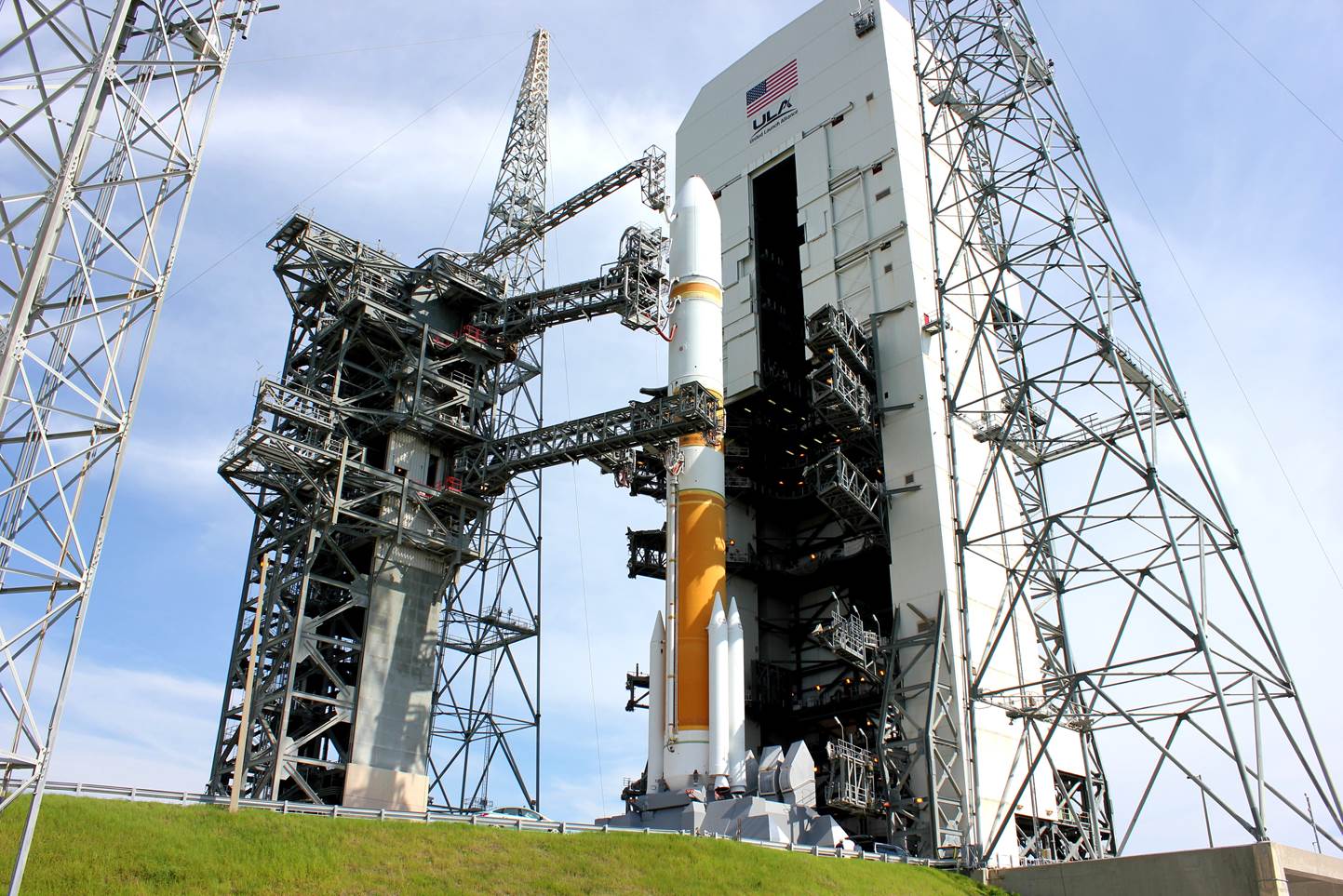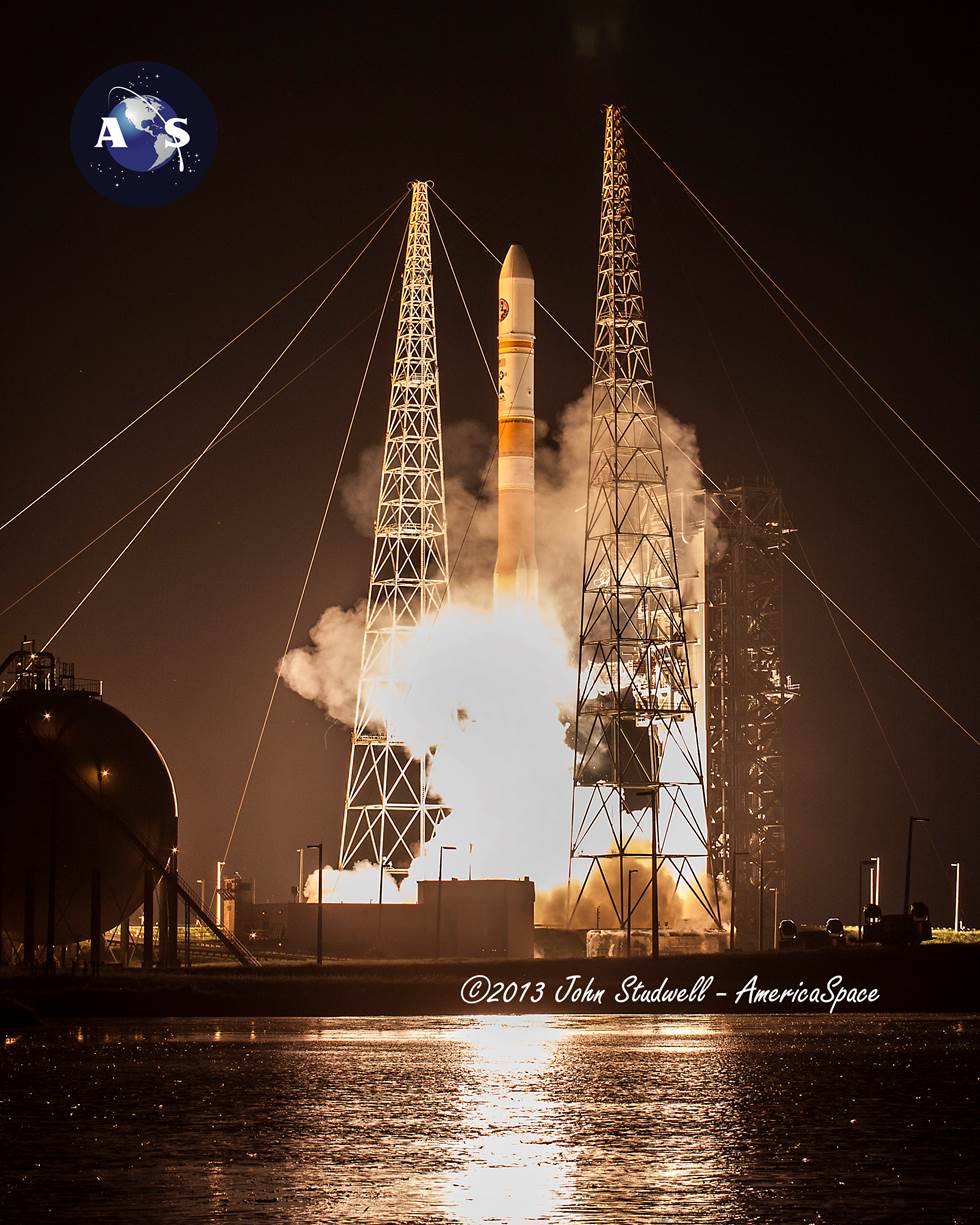
CAPE CANAVERAL, Fla — On Aug. 7, 2013, the AmericaSpace team headed to meet representatives from the United States Air Force’s 45th Space Wing as well as those from United Launch Alliance (ULA) in preparation for the launch of ULA’s Delta IV Medium with the Wideband Global Satcom 6 (WGS-6) spacecraft. This was far from our first rodeo, but this launch was not like what we had come to expect. Ordinarily, a smattering of cars dot the roads leading to Cape Canaveral Air Force Station, and a few media outlets, consisting of local television stations as well as the “die-hards”—media outlets that almost exclusively cover space matters—are present. Today was a different day. …

The exit off of State Road 528, which leads to Cape Canaveral, normally sports a few members of the public who have opted to pull over on the side of the road to watch the spectacle that is launch. For WGS-6, the roads were littered with RVs, car, vans, and other vehicles. Arriving at the meeting point outside the station’s gate, the media had also turned out in droves. Some of the “old guard” groused about these newcomers; those with better sense knew that this rebirth of interest, temporary or permanent, is a good thing.

The new attendees were beyond enthusiastic. This embittered the old-timers even more. These individuals fought against the inclusion of social media, and here they were again railing against the arrival of newcomers to the scene. It was disappointing. Space—be it new, old, commercial, military, whatever—needs the public and the media in all its forms to be inspired by it, to report on it, and, in so doing, to ignite the imagination of the rest of the nation.

The evening’s launch was flawless, taking place right on time at 8:29 p.m. EDT. The skies were mostly clear, providing an unparalleled view of the rocket as it thundered aloft. As the four solid rocket motors were jettisoned, they remained visible as they plummeted back to Earth. Then a surprise: two more stars lit up the night. The two halves of the fairing were spiraling away from the upper stage as the spacecraft was being ferried along on its journey to orbit. They remained visible for a long time afterward.

Since the end of the space shuttle program, the mood in and around Florida’s Space Coast has been one of melancholy, of uncertainty as to what the future holds. While the region’s recovery is still a ways off, this launch, if only for a little while, pushed back the night and reminded local residents there is a reason why this place is called the “Space Coast.”

[youtube_video]http://www.youtube.com/watch?v=8EPPHYN5XGA[/youtube_video]
Video courtesy of AmericaSpace

This feature is based off the opinions of the author and does not necessarily represent the views of AmericaSpace.
Want to keep up-to-date with all things space? Be sure to “Like” AmericaSpace on Facebook and follow us on Twitter:@AmericaSpace




Your heartfelt and moving article is so much appreciated Jason! Not only are space events themselves inspirational, but so are the views of AmericasSpace!